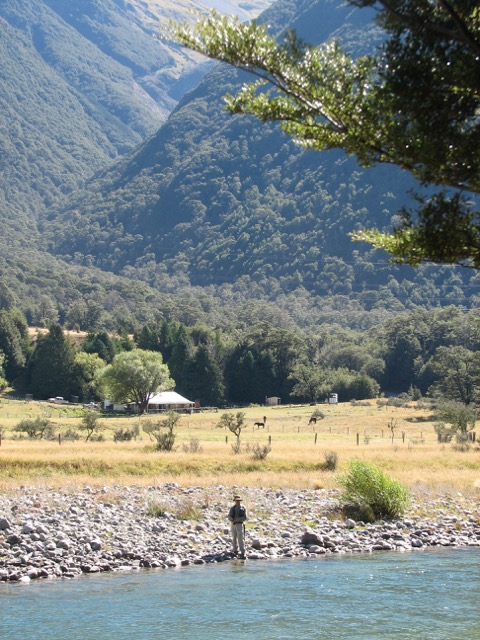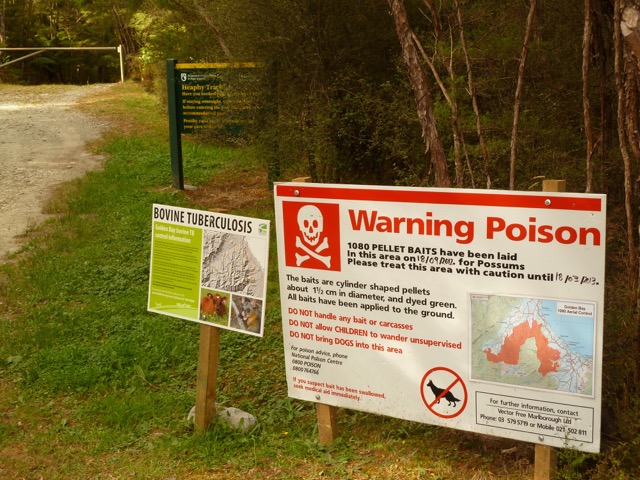Opinion by Ben Hope


Does 1080 have any adverse impact on trout?
To try to answer that, it’s necessary to look at 1080 and its properties.
Firstly 1080 was was originally patented in 1927 as an insecticide. Insects have a vital role in the ecology of any environment. They may be obvious insects like cicadas and beetles, worms or micro-organisms in the soil and forest floor.
In the mid 1990s a highly qualified entomologist Mike Meads researched the effects of an aerial 1080 drop in Taranaki. He was deeply concerned.
“Because 1080 wipes out many leaf-consuming insects and micro-organisms, the litter fails to properly decompose and builds up at an alarming rate.”
He went on to say “ widespread aerial distribution (of 1080) can only have serious long term effects on forests and forest life with enormous risk of destroying the ecosystem.”
Dubious Peer Reviews
But Mike Meads was moving in a direction against the Department of Conservation’s pro-1080 policy. The department came down hard. Mead’s work was subjected to peer reviews of dubious integrity. After all compliant DOC scientists were criticising Mead’s work.Mike Meads got no encouragement, quite the reverse.
Another scientist echoed Mike Meads concern. He was “rubbished.”
Fast forward to 2020. More recently scientist Dr Jo Pollard said “The poison (1080) is highly toxic, readily contaminates despite stringent precautions, travels rapidly in water and up food chains, causes reproductive defects across a vast range of species and has highly variable effects which remain poorly understood, with studies being sparse and of poor quality.”
“The 1080 poison to be used is broad spectrum, affecting all organisms that breathe oxygen,” said Dr Pollard.
The late Bill Benfield wrote two books “The Third Wave” and “War Against Nature” (Tross Publishing) that detailed and documented research. In his books Bill wrote of the rat plagues that inevitably occur after 1080 drops. About 80% of rats are killed in a 1080 drop. The 20% survivors breed back with a vengeance. A female rat at just six weeks of age can breed and have a litter of up to eight or more. The same female is capable of four or five litters a year.
Rats-Superbreeders
Rats are super-prolific breeders especially when there is abundant food. following 80% being taken out.
The rat post-1080 explosion has been confirmed by studies such as scientist Wendy Ruscoe’s printed in Landcare Research’s publication December 2008. Other studies show the same super- breeding response by rats to 1080 poisoning.
The abundance of rats is a food bonanza for stoats which prey on rats.
Stoats, a multi-litter breeder similar to rats, prey on the banquet of numerous rats and rapidly increase in numbers.
The Department of Conservation and OSPRI in their shortsightedness and ignorance have disrupted the balance of the food chain. Predators become utterly predominant. It will take years for ecological equilibrium to be restored.
Insects get hit hard. Trout depend on terrestrial insects in summer such as cicadas. 1080 obliterates cicadas, a prime summer food of New Zealand trout. The cicada kill is worsened by cicadas undergoing several larval years in the soil. A 1080 drop will therefore wipe out several year age classes.
It is simple logic – diminish the food of trout, diminished the “carrying capacity” of the stream and that means less trout.
As for mast years, they’re a natural cyclic event having occurred over millions of years.

Cicadas are a major food source for trout in the high country – upper Wairau River
What are the effects on trout themselves? Sub-lethal doses of 1080 have endocrine disruptor characteristics where males become infertile as shown by mallard duck studies. Does it occur with trout? Does it lessen the spawning capability of trout?
No one knows because research – and credible research – has not examined it. Certainly filming by brothers Clyde and Steve Graf of after a 1080 drop shows eels feeding on toxic possum carcasses and freshwater crayfish taking 1080 baits back to lairs. Trout will eat crayfish and eels.
Poor Science
The science is either lacking in quality or in most cases, non-existent.
What of DoC’s science that it says backs up its 1080 programme?
DoC’s “science” was analysed by two independent retired USA statistical analysts scientists Quinn and Pat Whiting O’Keefe. They were shocked at the poor quality of the “paid, commissioned” science.
They summarised “There is certainly no evidence of net ecosystem benefit (from 1080)— considerable evidence exists that DoC’s aerial 1080 operations are doing serious harm, as one would expect, given that 1080 is toxic to all animals. It kills large numbers of native species of birds, invertebrates and bats — Moreover, most native species are completely unstudied. In addition considerable evidence shows there are chronic and sublethal effects to vertebrate endocrine and reproductive systems, possibly including those of humans.”
Meanwhile Fish and Game seem reluctant to query the impact of 1080 on trout.
But trout aside, game birds such as quail and particularly Himalayan partridge such as chukor, suffer heavy losses in high country 1080 programmes. Fish and Game should be concerned at 1080 because of those game birds.
So does 1080 adversely affect trout?
Who knows?
No one knows!
That should be big reason for concern.

OSPRI and DOC are the two major spreaders of the ecosystem toxin 1080

Thoughtful article which all fish and game councillors should read. Why does NZ use over 90% of the world’s 1080 and yet we’re a tiny country. Fish and Game is under review, DOC is the one that should be reviewed.
The point is there is no reason for the 1080 drops anyhow. NZ is one of the most bovine TB free countries in the world. It is bovine TB free, well under WHO yardstick. Mast years have been here since beech trees first grew – millions of years ago.
Rats have been here for 250 to 600 years (kiorie) and ship rat, possums (which aren’t a pest and are NOT a predator) for over 150 years. But DOC stuffs up Nature’s evolved equilibrium with disastrous consequences causing rat and stoat plagues.
Ecologically tragic and an irresponsible waste of public money.
Which politician is going to stand up and call a halt?
1080 killing trees, ???
The internal moisture content may be sufficient to initiate microbial growth on the rich substrate with consequent metabolic and biosynthetic activities. Because of the way by which NaFa baits are processed, handled and applied, an early establishment of a microflora could occur by contamination from human handling of treated baits, from NaFa solution, or during .transportation. The high toxicity of NaFa requires specific stations for preparation of NaFa baits or re-packaging of NaFa so that the microflora in these areas would have had ample opportunity to develop defluorinating systems. Thus when baits are supplied or transported the induced microflora would have been carried along to the~ new destination and consequently the nutrient and microbial diversity or numbers of the areas to which NaFa baits are scattered are of less concern when considering the inoculum for biodegradation of NaFa. Other physical environmental factors affecting the proliferation or further establishment of induced microflora would be relatively more important. NaFa baits are usually applied in winter when conditions are cold and dry and which may suppress or retard the growth of microorganisms and hence de fluorination of NaFa.